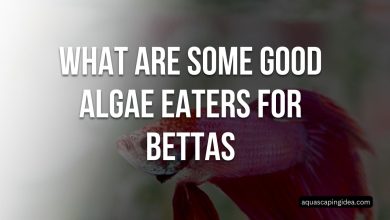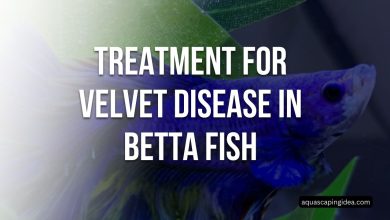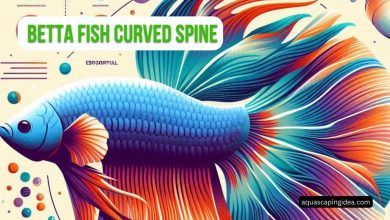What Plants Are Good For Betta Fish

Drifting smoothly under lush leaves, your kaleidoscopic betta glides through crystalline waters softened by the intricate lacework of dancing green partners. Not only beautiful to behold, thriving aquatic flora transforms basic tanks into dynamic ecosystems teeming with vibrant life. Beyond aesthetics, appropriately selected plant species directly enhance betta health through nutrition, oxygenation, and behavioral enrichment.
Plants complete the nitrogen cycle while producing supplementary microfauna foods. As biological filters, hardy varieties help maintain ideal water quality and pH levels critical for fish. This article explores top beginner-friendly freshwater species perfect for betta aquariums. We’ll overview how live plants promote wellness, then spotlight 10 easy-care options contributing beauty and vital balance.
How Plants Promote Betta Health
From biological services to nutrition and animal behavior, vibrant vegetation packs power supporting betta success:
Biological Filtration
Actively photosynthesizing plants continually extract toxic nitrogen compounds exporting pristine water back into the tank. Complex root systems also oxygenate substrate preventing anaerobic pockets.
Here is a table on how plants provide biological filtration in aquariums:
| Biological Filtration Process | Details |
|---|---|
| Nitrogen Compound Removal | Plants absorb and metabolize toxic nitrogen compounds like ammonia, nitrites, and nitrates through their roots and leaves during photosynthesis. This helps export clean water back into the tank. |
| Substrate Oxygenation | Plant roots form complex systems that penetrate deep into the substrate layer. This oxygenates the substrate, preventing anoxic zones and pockets of anaerobic bacteria from forming. |
| Aerobic Bacteria Hosting | Surfaces of plant leaves, roots, and rhizomes provide excellent areas for colonies of beneficial aerobic bacteria to grow. These bacteria further break down nitrogen compounds. |
| Nutrient Export | Plants take up nitrogen, phosphorus, and other nutrients, incorporating them into new plant tissue growth rather than letting them accumulate as wastes. |
| Water Circulation | Photosynthesis and transpiration processes create gentle water circulation and gas exchange at the plant surfaces. |
By performing these biological filtration roles, live plants help establish the nitrogen cycle and maintain balanced water parameters conducive to fish health.
Nutritional Support
Leaf litter accumulation and tasty algal or microcrustacean growth on decor provides betta snack spots. Fallen debris also contributes natural foraging behaviors.
Here’s a table on how plants provide nutritional support in aquariums:
| Nutritional Support | Details |
|---|---|
| Leaf Litter | As plant leaves decay, they form a natural leaf litter at the bottom of the tank. This leaf litter is a source of food for bettas, as it harbors microorganisms, biofilms, and infusoria that bettas can graze on. |
| Algal Growth | Certain plants, especially those with broad leaves, provide surfaces for algae to grow on. Bettas can nibble on these algae, which are a good source of nutrients and roughage. |
| Microcrustacean Growth | The complex structure and surfaces provided by aquarium plants create ideal habitats for microcrustaceans like daphnia, cyclops, and scuds to thrive. These tiny crustaceans are a highly nutritious live food source for bettas. |
| Natural Foraging Behavior | The presence of leaf litter, algae, and microcrustaceans encourages bettas to exhibit their natural foraging behaviors, which can be mentally stimulating and reduce stress. |
| Supplementary Food Source | While not a complete diet, the various microorganisms and growth supported by plants can provide a supplementary food source for bettas, especially in a well-established aquarium. |
By fostering the growth of these natural food sources and allowing bettas to forage, live plants contribute to a more nutritionally balanced and enriching diet for bettas.
Behavioral Enrichment
Plants offer security, exploration opportunities and activity. Fishes exhibit natural territorial displays and investigatory behaviors. Hiding spaces allow relaxation minimizing stress.
Here’s a table on how plants provide behavioral enrichment for bettas:
| Behavioral Enrichment | Details |
|---|---|
| Security and Shelter | Plants with broad leaves or dense foliage create hiding spots and secluded areas where bettas can retreat, feel secure, and reduce stress levels. This mimics their natural habitat. |
| Exploration and Activity | The complex structures created by plant growth encourage bettas to explore, investigate, and exhibit natural swimming and foraging behaviors, promoting physical activity. |
| Territorial Displays | Male bettas will often establish territories around plant structures and engage in flaring, gill displays, and bubble nesting behaviors, which are important natural behaviors. |
| Resting Areas | Broad-leaved plants like Anubias provide resting spots near the water surface where bettas can lay semi-submerged and conserve energy between active periods. |
| Reduced Aggression | The hiding areas and visual breaks provided by plants can help reduce aggressive behaviors and allow bettas to avoid constant sight of their own reflections or tank mates. |
| Spawning Sites | Plants offer potential spawning sites for bettas, with males building bubble nests among plant leaves and stems to attract females and protect eggs. |
| Environmental Enrichment | The overall presence of live plants creates a more dynamic, naturalistic environment that engages bettas’ senses and provides mental stimulation. |
By providing security, territories, exploration opportunities, and environmental complexity, live plants allow bettas to express a fuller range of natural behaviors for improved psychological welfare.
Oxygenation
Photosynthesis continually diffuses molecular oxygen into the water column, especially beneficial for inactive nighttime hours when life-sustaining gas gradients plummet.
Here’s a table on how plants provide oxygenation in aquariums:
| Oxygenation Process | Details |
|---|---|
| Photosynthesis | During photosynthesis, plants absorb carbon dioxide and release oxygen into the water column. This continuous oxygen production helps maintain dissolved oxygen levels. |
| Gas Exchange | The surfaces of plant leaves provide areas for efficient gas exchange, allowing oxygen to diffuse from the plant into the water. |
| Water Circulation | Photosynthetic activity and other plant processes create gentle water circulation, which helps distribute oxygenated water throughout the aquarium. |
| Nighttime Oxygen | Aquatic plants continue to release oxygen at night through respiration, although at a slower rate than during photosynthesis. This oxygen production is especially beneficial during nighttime hours when other sources of oxygenation (e.g., surface agitation) are reduced. |
| Low-Flow Areas | Plants oxygenate low-flow areas of the aquarium where water circulation is minimal, ensuring adequate oxygen levels in all regions of the tank. |
| Beneficial Bacteria | Plant surfaces host colonies of aerobic bacteria that also contribute to oxygenation through their metabolic processes. |
| Algae Oxygenation | Algae growing on plant surfaces and decor also produce oxygen through photosynthesis, further contributing to overall oxygenation. |
By continuously producing and diffusing oxygen through photosynthesis and other processes, live plants help maintain optimal dissolved oxygen levels throughout the aquarium, which is crucial for the health and respiration of fish like bettas.
Now let’s spotlight 10 top-rated species balancing ease of care against contributions enhancing betta life quality.
10 Best Betta Tank Plants
10 Best Betta Tank Plants From carpeting groundcovers to towering backdrops, these plants check every box across needs from nutrition to enrichment. Expect colorful variety, hardy constitutions and beginner-friendly propagation for luscious growth.
Java Moss
Mossy carpets oxygenate water and concentrate microfauna to supplement wild betta diets. Rapid growth helps maintain ideal water parameters. Low light thrives tied to decor.
Anubias
Tough broad leaves emerge from rhizomes readily attached to hardscape. Slow growth remains manageable for beginners. Survives low light. Bettas utilize broad leaves as napping hammocks!
Amazon Sword
Vibrant leafy rosettes provide dense hiding networks. Rapid growth helps filter nitrogenous waste while extensive root systems maintain rich substrate integrity. Moderate lighting runs 6-8 hours for vigorous photosynthesis.
Java Fern
Lacy-textured jungle effect. Thrives anchored to decoration as rhizomes access water column rather than burial. Dim lighting sustains this hardy grower contributing jungle-like ambience.
Hornwort
Fast-growing stems oxygenate tanks while providing foraging. Fine leaves easily propagate new columns. Ideal floating or anchored. Prolific growth helps regulate water quality parameters. Thrives in low-medium light.
Marimo Moss Balls
Unique spherical independent “plants” slowly roll playfully across substrate. Concentrates healthy microfauna populations that become nutritious betta snacks. Thrives even in low illumination and water flow.
Anacharis
Bunches of vivid green stems remove nitrogenous toxins rapidly from the water column making them ideal biological filters. Appreciates moderate lighting periods. Does best rooted in groups versus solitary shoots.
Water Wisteria
Vibrant green leaves on branching woody stems create attractive backdrops, especially the purple-hued varieties. Fast growing nature requires frequent pruning. Propagates readily from trimmings. Appreciates soil rooting.
Water Sprite
Delicate leafy foliage blankets water surfaces while often sending reaching roots deeper towards substrate. Supports crucial nitrogen cycles helping maintain water quality. Grows aggressively becoming nearly invasive! Best managed with consistent harvesting.
Cryptocorynes
Slow growing rosettes prefer planting within shaded spots. Unfurling leaves reveal eye-catching reddish-brown veining against green backdrop. Peaceful movement in currents provides hypnotic inspection. Hardy plants once established.
Table 1. Top 10 Aquarium Plants for Betta Tanks
| Plant | Key Benefits | Care Difficulty |
|---|---|---|
| Java Moss | Oxygenation, foraging | Easy |
| Anubias | Resting leaves, water quality | Easy |
| Amazon Sword | Filtration, security | Moderate |
| Java Fern | Water column oxygenation | Easy |
| Hornwort | Nutrition, purification | Easy |
| Marimo Moss | Microfauna nutrition | Very easy |
| Anacharis | Water quality regulation | Moderate |
| Water Wisteria | Décor enhancement | Moderate |
| Water Sprite | Biofiltration | Moderate |
| Cryptocorynes | Soothing ambience | Moderate |
FAQs
How many live plants should a betta tank have?
Incorporate as many easy growing varieties as allow efficient tank access for feeding and changing 25% water twice weekly. Start with 6-8 individual plants.
Do betta fish like tank plants?
Yes, plants provide security, brain-stimulating novelty and supplemental nutritional grazing like floating hornwort leaves or associated infusoria.
Can you put too many plants in a betta tank?
Overcrowding plants steals room needed for ample swimming corridors and rest spots. Prioritize quality species over quantity. Assess tank dimensions and allow open zones.
Are fake silk plants ok for bettas?
Silk plants miss benefits of water filtration, oxygenation and microfaunal nutritional enrichment live varieties provide. But fins safely rest upon soft silks avoiding tears from plastic.
Conclusion
Transform barren betta boxes into intricately balanced ecosystems interweaving science supporting fish health with soothing aesthetic ambience by incorporating thoughtfully selected aquatic plant species. Both beautiful and profoundly practical, vibrant flora completes the environmental recipe granting these personable fish maximum expression of instincts and abilities defining overall wellness. When provided properly balanced and thriving live vegetation, bettas fully shine amazing capacities adapting the planted aquarium into optimal habitat. Go green for fishy friends!




